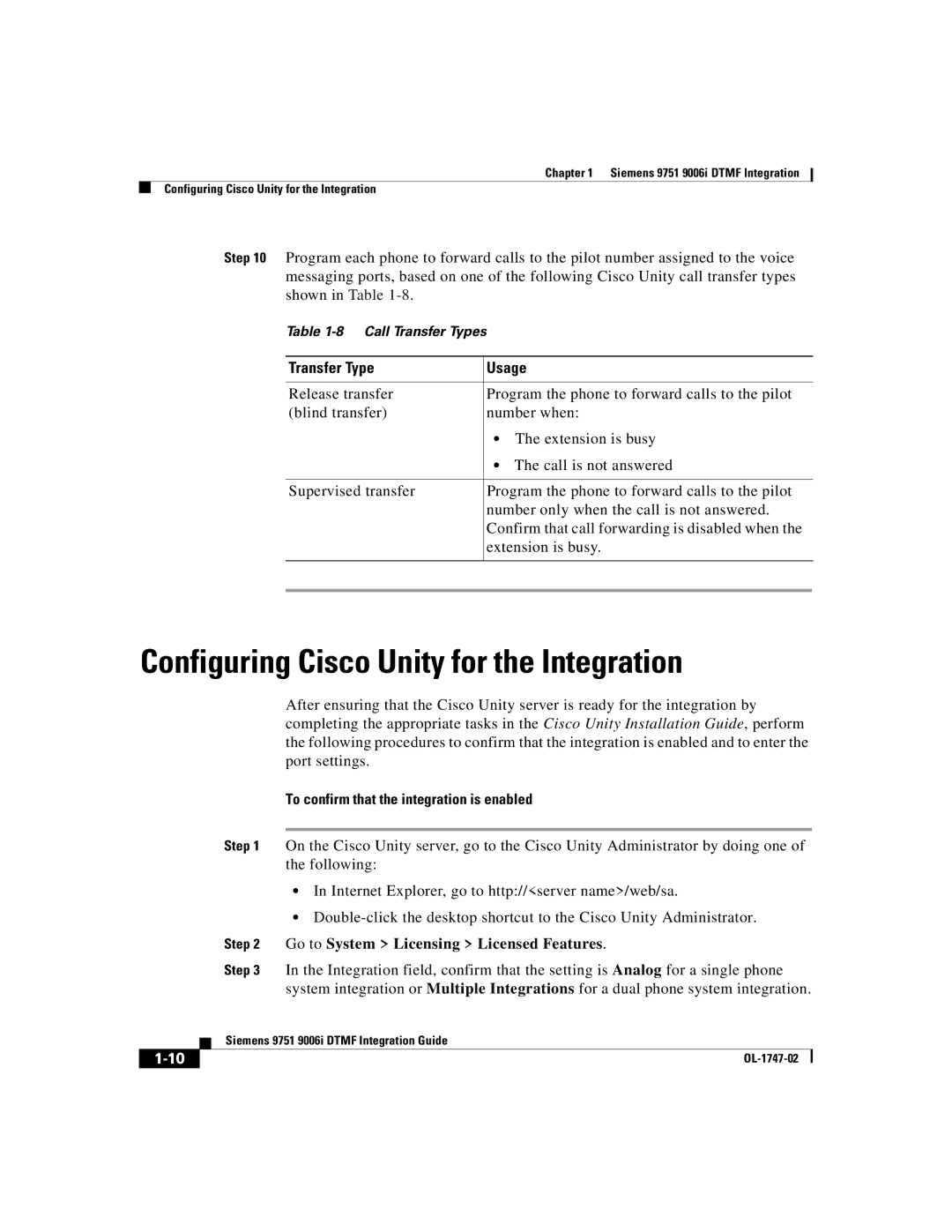Chapter 1 Siemens 9751 9006i DTMF Integration
Configuring Cisco Unity for the Integration
Step 10 Program each phone to forward calls to the pilot number assigned to the voice messaging ports, based on one of the following Cisco Unity call transfer types shown in Table
Table
Transfer Type | Usage |
|
|
Release transfer | Program the phone to forward calls to the pilot |
(blind transfer) | number when: |
| • The extension is busy |
| • The call is not answered |
|
|
Supervised transfer | Program the phone to forward calls to the pilot |
| number only when the call is not answered. |
| Confirm that call forwarding is disabled when the |
| extension is busy. |
|
|
|
|
Configuring Cisco Unity for the Integration
|
|
| After ensuring that the Cisco Unity server is ready for the integration by | |
|
|
| completing the appropriate tasks in the Cisco Unity Installation Guide, perform | |
|
|
| the following procedures to confirm that the integration is enabled and to enter the | |
|
|
| port settings. | |
|
|
| To confirm that the integration is enabled | |
|
|
|
| |
|
| Step 1 | On the Cisco Unity server, go to the Cisco Unity Administrator by doing one of | |
|
|
| the following: | |
|
|
| • In Internet Explorer, go to http://<server name>/web/sa. | |
|
|
| • | |
|
| Step 2 | Go to System > Licensing > Licensed Features. | |
|
| Step 3 | In the Integration field, confirm that the setting is Analog for a single phone | |
|
|
| system integration or Multiple Integrations for a dual phone system integration. | |
|
| Siemens 9751 9006i DTMF Integration Guide | ||
|
| |||
|
|
| ||
|
|
| ||
